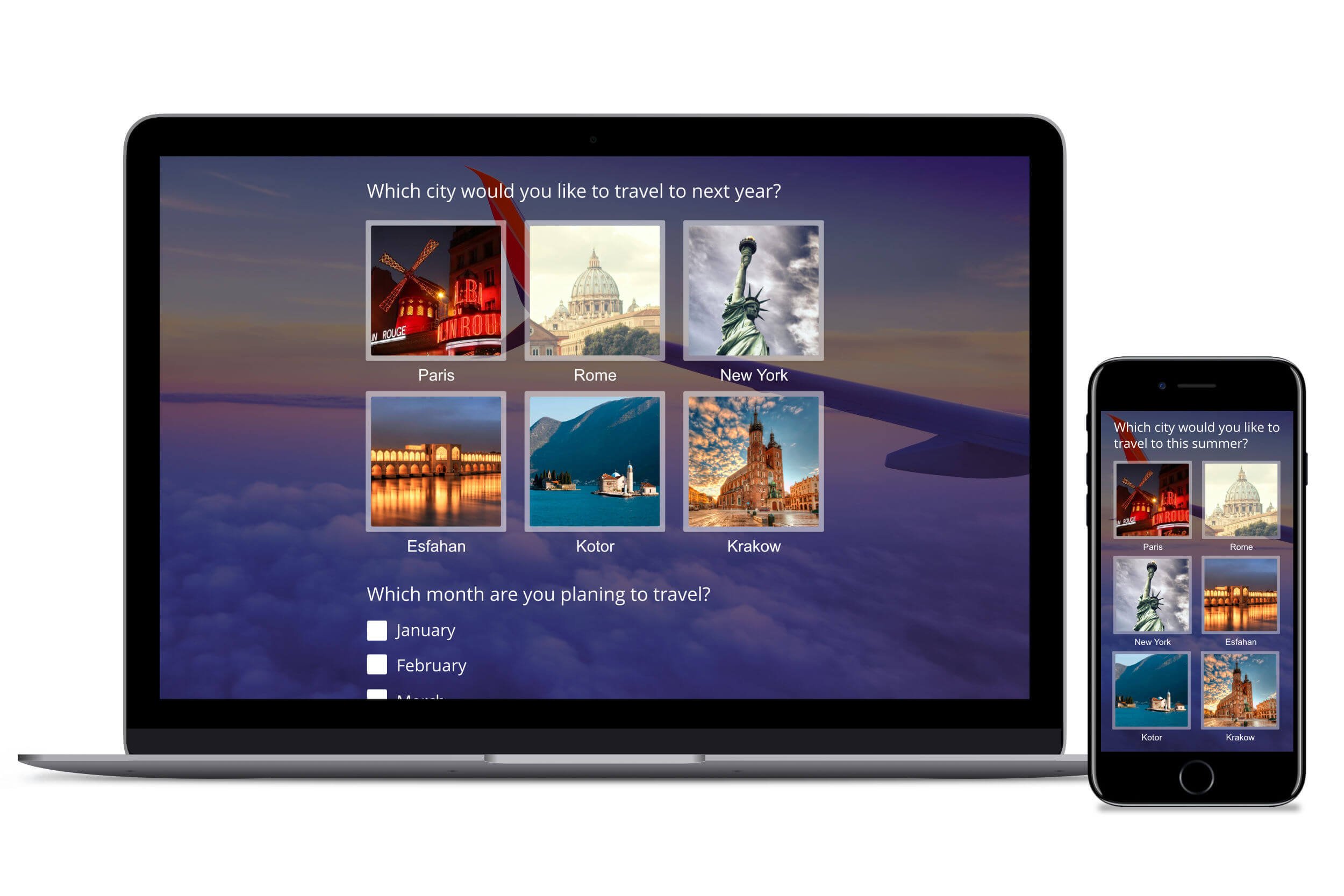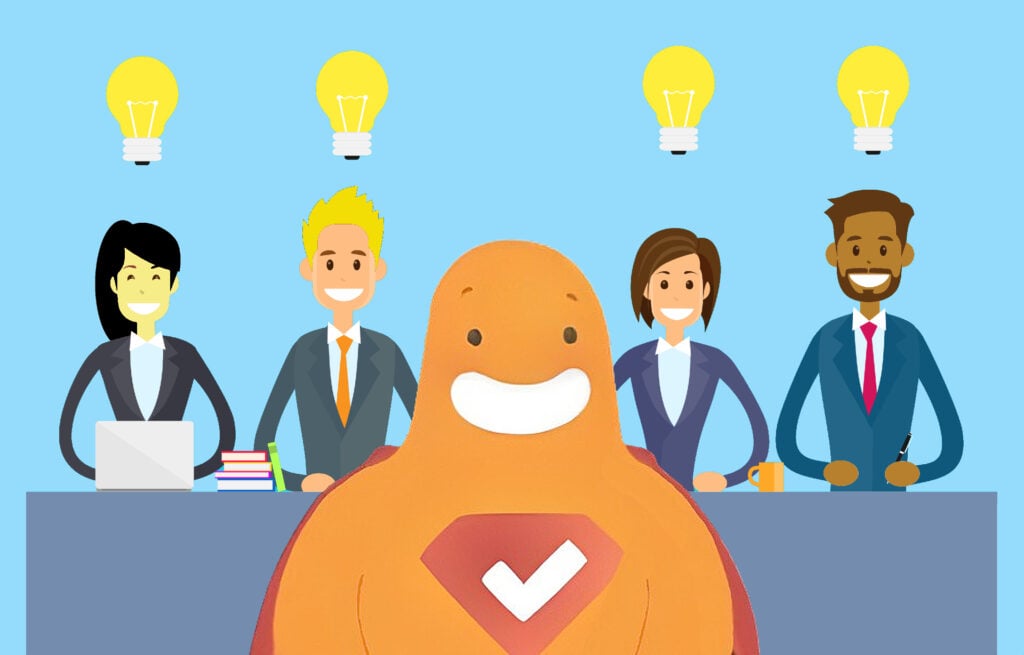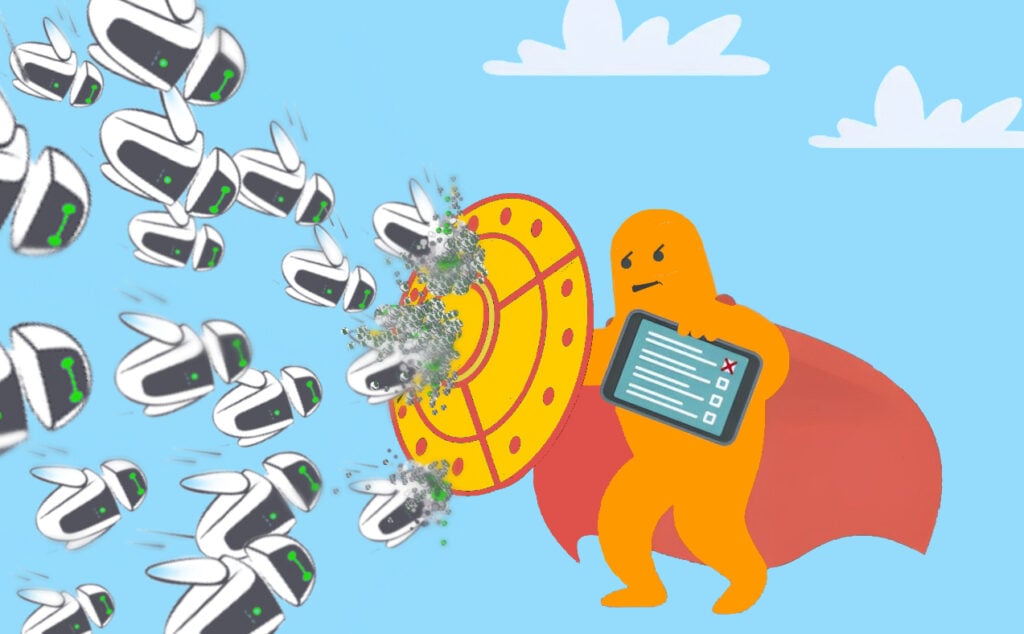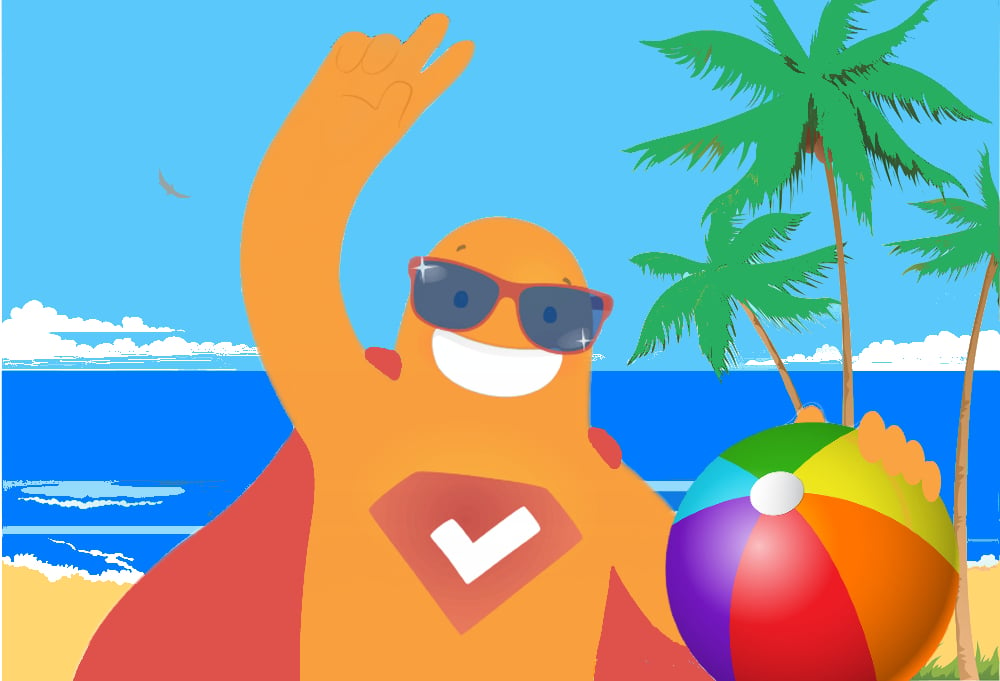Let’s face it: Text-based surveys can be kind of boring. Especially if they’re long and on a topic of little interest to respondents. Perhaps that’s why, after taking into account various factors (e.g., internal or external company survey, anonymity, and incentives), the average response rate for online surveys is between 10% and 30%. Wouldn’t it be great if you could boost that number to collect more responses, ultimately improving the accuracy of your survey? You can with a photo survey or an online poll with pictures! In this blog, we’ll discuss the power of imagery in surveys and polls and highlight seven benefits of a picture survey or picture poll.
Create your photo survey, picture poll, or image-based questionnaire now!
The Power of Imagery in Picture Surveys & Picture Polls
We all know that dogs use their smell more than any of their other senses, which is why they make such good “detectives.” Bats, on the other hand, have highly-sensitive hearing, navigating their world and finding prey based on sound waves. So what about us humans? Science shows that we are 90% visual beings. In fact, research by the 3M Corporation has concluded that we process visuals 60,000 times faster than text (adding on, research from MIT finds that our brains can process images seen for as little as 13 milliseconds).
All this said, it’s easy to see why including images in your surveys, polls, forms, or questionnaires can make a big impact on respondents. “…in our society, we speak with images,” says Ernesto Olivares, CEO at Ernesto Olivares VisuaInformation. “…Most people today prefer to obtain information through the online system, primarily visual, and the current generation has grown and learned in such a way that it is difficult for them to cope with a different communication from using images.”
7 Benefits of Using a Poll with Pictures
The following seven benefits highlight the power of incorporating photos, illustrations, or emojis into your online surveys.
1. Trigger Participant Memory
Imagery can stimulate the memory, triggering buried ones and helping people recall a precise moment in time, much more rapidly than words. According to neuroscientists, that’s because humans possess the ability to encode pictures. In a study that demonstrates this, a group of people was shown 10,000 photographs and, a few days later, another 1,000 – half from the original batch and half new. Within seconds, respondents accurately pointed to the ones they’d seen before.
Other examples also highlight the ability of images to trigger memory. Lightspeed Research highlights an experiment designed to measure awareness and purchase consideration for various yogurt brands. In the experiment, half the respondents were given just the brand name and the other half an image of the product. Average brand awareness increased by 20% and purchase consideration by 40% with imagery.
“This is perhaps not surprising if you think about how we process shopping brands almost entirely visually,” says Jon Puleston, VP of Innovation. “We rarely hear the brand name [unless they advertise on TV or we talk about it]… You could argue that without imagery, measuring brand awareness of supermarket brands like this is almost meaningless.”
2. Trigger Emotional Response
Is a picture worth 1,000 words? According to new research published in the journal Frontiers in Psychology, the answer is yes. In the study, a group of thirsty individuals was presented with positive images (e.g. a panda bear, a smiling face) and negative images (e.g. a knife, a scowling face), as well as emotionally-charged words. Then, they were offered a drink. Those who saw positive imagery tended to accept the drink, while those who saw negative imagery tended to decline. On the other hand, positive and negative words had no impact on whether they chose to take the drink or not, demonstrating the impact of imagery over language.
So what images are most likely to evoke emotions from your respondents?
- Candid moments
- Sincere human faces
- Creative compositions
- Babies and children
- Baby animals
To put this into a survey context, Lightspeed Research asks a group of mothers to write about their experiences with baby wipes. The photo surveys that included an image of a baby garnered an average of 35-word responses, while text-based surveys without the baby garnered an average of only 18 words.
3. Communicate Ideas More Effectively
Images are able to convey more than words. Plus, some people may not take the time to read a lot of text, while an image only takes milliseconds to process. Consider the following example of a new steak & barbecue restaurant wanting to test their logo designs with consumers. They could hit respondents with this big block of text:
This survey is designed to understand your feelings toward our potential new steak & barbecue restaurant logos. Think about the different relationships you have with food. Some foods you may love, others you may be indifferent to, and others you just hate. We want you to think of these logos in the same way, and let us know how you feel about them.
Or you could present the instructional information this way using beautiful survey visuals.
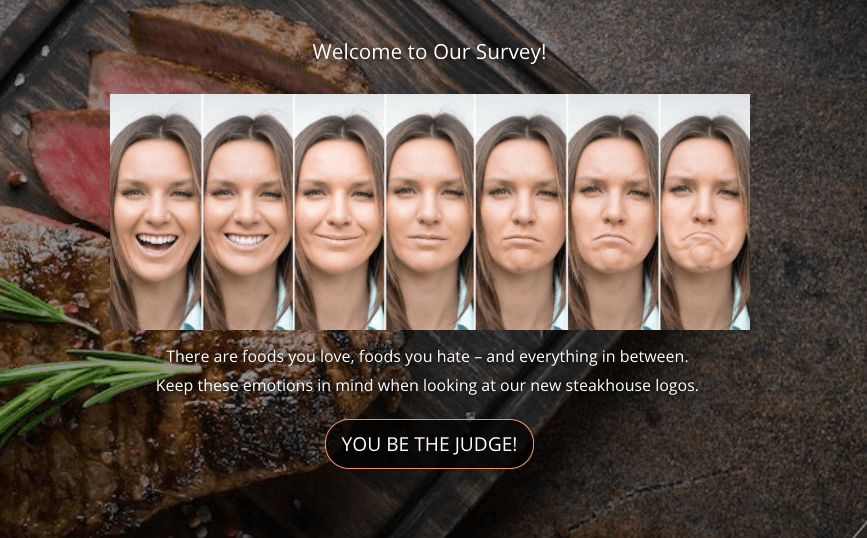
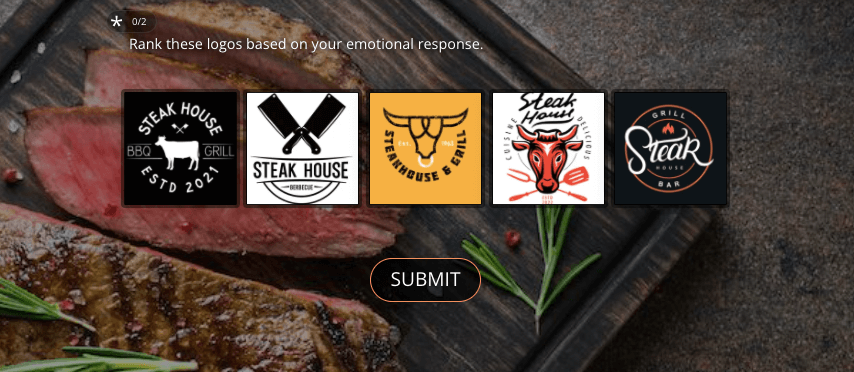 Note: Visual created with SurveyLegend’s survey, poll, and form maker.
Note: Visual created with SurveyLegend’s survey, poll, and form maker.
So, which type of survey would you prefer to take? We think the answer is obvious! First off, by using emotional faces in your picture survey, most people will have an emotional response and are more likely to respond. Secondly, they’ll understand exactly what is meant by the answer options. Thirdly, they don’t have to read a block of text to understand the instructions!
4. Make It More Engaging & Fun
You never get a second chance to make a good first impression. If your respondent clicks your survey link and is faced with a block of text (even if it’s written in a friendly manner), they may drop out before they even begin the survey. On the other hand, present them with a fun or engaging image from the start, and they’re more likely to stick with it to the end. We already know cute animals can evoke an emotional response; so, how do you think someone would react to seeing this image for a pet food survey as soon as they click your link? Probably very favorably!
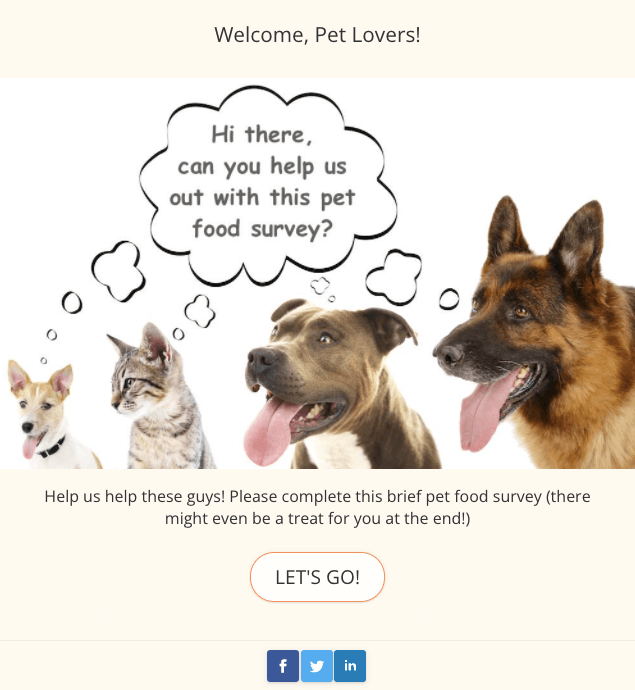 Note: Visual created with SurveyLegend’s survey, poll, and form maker.
Note: Visual created with SurveyLegend’s survey, poll, and form maker.
One more thing to consider when it comes to visual surveys and polls. but first, think back to your younger years. Remember “Show & Tell”? As students, we didn’t just tell classmates about something; we always had to show them something as well. That’s because visuals have been found to increase engagement by as much as 94%. Think about it: Have you ever sat through a PowerPoint presentation that was text only?
See, just adding the humorous gif above added some fun to this blog and broke up the monotony of text. Think about how that will improve your surveys, and make them more enjoyable for respondents! Simply put, and as the previous sections above have highlighted, creating a poll with pictures or a photo-based survey can greatly improve engagement. Read more about creating a fun photo survey.
5. Get More Accurate Responses & Cross Language Barriers
With text-based surveys and polls, answers may not always be accurate. This could be because the respondent did not fully read the question or did not understand it, either due to a lack of reading comprehension or a possible language barrier (words can also be interpreted differently in different languages, and may have different meanings altogether depending on the culture). However, just about everyone can process images, and they are universal and resonate with people regardless of what language they speak (be sure to read more about multilingual surveys and their benefits).
6. Incorporate Branding Elements
Many companies incorporate their logo to the welcome page of their survey as well as each subsequent page. Because there are many scammers out there, adding a logo helps foster trust, especially when the survey deals with a sensitive topic, making it easier to gather feedback. Additional branding elements, such as color and fonts, can also be incorporated into branded photo surveys to maintain brand identity. It’s a good idea to also include a redirect link on the image so that if clicked, it will open the homepage of the company in a new window, assuring respondents that the survey is legitimate.
Lastly, a photo survey or picture poll is a great way for companies and brands to test out a rebranding strategy. Visuals allow them to test out new logos, imagery, fonts, and colors to gauge the reaction of the public before taking the new look live.
7. Improve Response Rates
Last but certainly not least, adding images to surveys, polls, forms, and questionnaires improves response rates! That’s what all of these benefits ultimately add up to. So, whether the images trigger memory or emotion, communicate ideas more effectively, or simply just make the task more enjoyable to complete, picture polls and surveys are bound to see better results (and more accurate data). Don’t believe us? Perform a simple A/B test. Create an online text-based poll and an online poll with pictures. Send the same number of each to different groups of people within the same demographic, keeping all other variables the same (subject line, length of survey, time of day sent, etc). We’re confident that you’ll receive a greater percentage of responses from your image-based survey or poll.
Conclusion
Imagery is powerful, possessing the ability to inspire, motivate, and change perceptions. So, using images in your online surveys, polls, form, and questionnaires is a no-brainer. Unfortunately, many online survey companies only offer text-based options. Or, if they do allow the inclusion of imagery, it can be complicated with less-than-stellar results (blurry images, images that don’t render well across mobile devices, etc). Not so with SurveyLegend!
With SurveyLegend, images can be resized at your discretion, complementing questions or answers, or creating beautiful backgrounds. Of course, you’re also not limited in the types of image polls and image-based surveys you can create. For instance, you can use imagery to create clickable image polls, visual-based multiple-choice selections, ranking surveys with emojis, and more. So, begin reeling in respondents and more accurate data with our free online photo voting tool and photo surveys. You can start now or read more about wowing your respondents with SurveyLegend’s image-based surveys and polls.
Do you use imagery in your surveys? Have you found that visual surveys and polls perform better than text-based versions? Let us know about your experiences in the comments!
Create your photo survey, picture poll, or image-based questionnaire now!
Frequently Asked Questions (FAQs)
What is the average online survey response rate?
Survey response rates vary based on a number of factors, such as whether it’s internal or external, level of anonymity, length, inclusion of incentives, and whether it incorporates imagery into the questions and answers. On average, though, the response rate for online surveys is between 10% and 30%.
What are the benefits of adding photos to surveys and polls?
Photo surveys and polls typically perform better than text-based surveys. That’s because imagery triggers memory and emotion; breaks up the monotony of text; crosses language barriers and is easily understood: and generally makes survey-taking more engaging and fun.
What types of photo survey and picture poll images are most likely to resonate with respondents?
Studies show candid moments, human faces, babies and children, and baby animals create the greatest emotional reaction. Creative compositions/designs can also create an emotional response.

